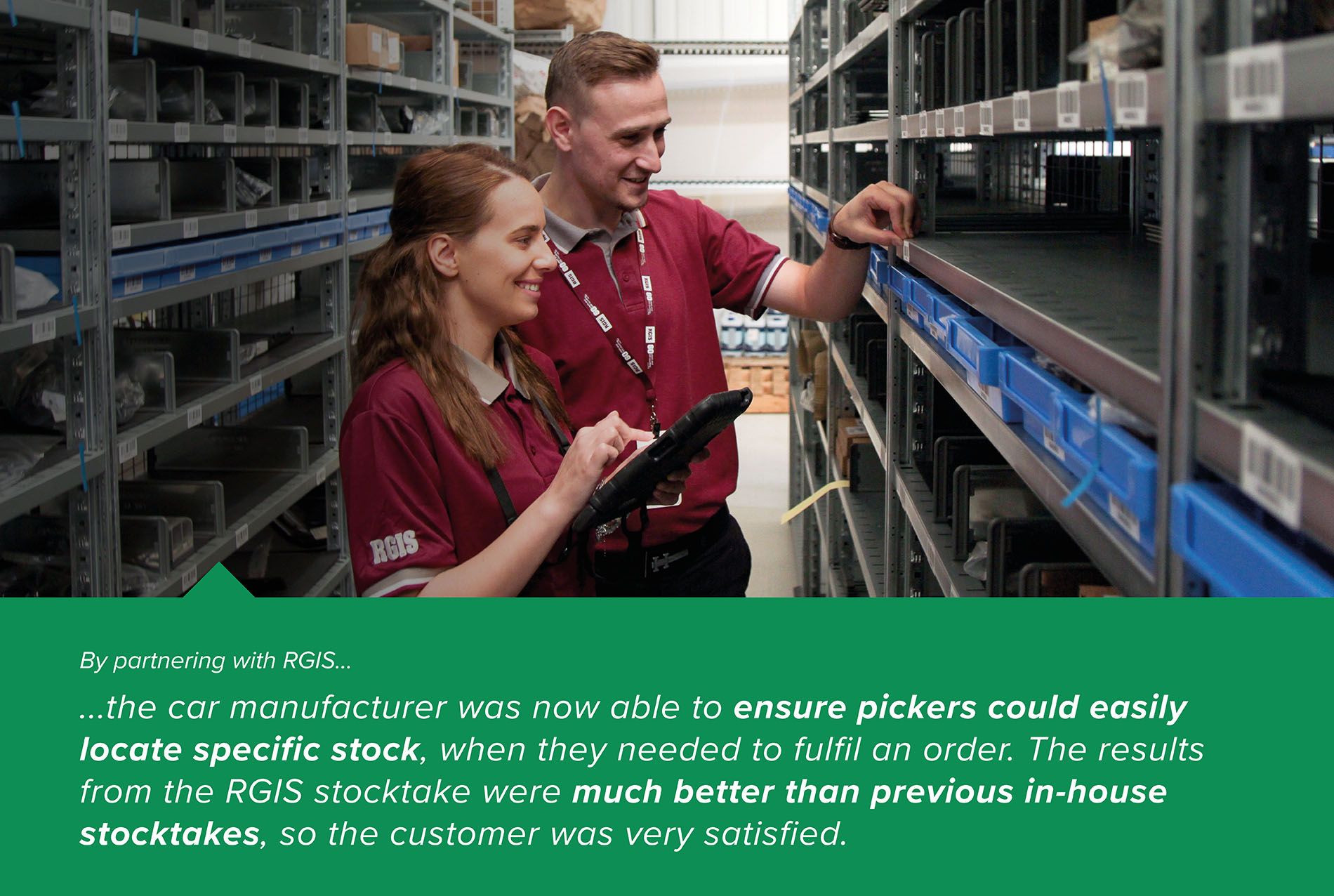Vehicle Parts Warehouse Stock Count

A Swedish automotive manufacturer of luxury vehicles headquartered in Sweden. The company manufactures and markets sport utility vehicles, station wagons, hatchbacks, sedans and compact executive sedans. In August 1955, exports to the USA began since then, the manufacturer’s cars have reached all corners of the globe. In Australia, the car manufacturer also operates a number of spare parts warehouses.
REQUIREMENTS
The car manufacturer required assistance in counting specific sections of the warehouse where products that had arrived directly from overseas on pallets or crates were stored. Accurate data would then ensure pickers could locate the stock when they needed to pick an order. The car manufacturer required RGIS to provide the following:
- Complete a count of the sections of the warehouse classified as PELC and VMR
- Update stock on hand levels and bin locations for all selected stock
- Provide variance reports
SOLUTION
The car manufacturer partnered with RGIS to complete the vehicle parts stock count project, and RGIS provided the following:
- RGIS teams conducted a site visit to better understand the customer’s requirements
- Scheduled a team of 14 experienced RGIS auditors to count both sections of the warehouse over two days (10 for PELC and 4 for VMR)
- RGIS teams paired up with the customer’s employees to help assist with troubleshooting and accessing stock codes. Some pallets needed to be maneuvered to access the stock code details
- An electronic stock file was provided to RGIS, containing the Part Number, Description, Supplier Id, Department, Main Package Id, Current Location and expected Stock on Hand
- RGIS loaded the electronic stock file into the handheld scanners to collect stocktake data and produce reports
- Any items which were not found on the product master stock file were quarantined so that part numbers could be sourced and added to the database
RESULTS
The car manufacturer found by outsourcing the vehicle parts stock count project to RGIS, the following results were achieved:
- Accurately counted over 17,000 SKUs and over 11,000 bin locations across both sections of the warehouse
- Once the initial count was completed and data processed, RGIS produced a variance report to indicate any part numbers that were:
- Captured in a bin location not matching the customer’s system
- Stock quantities not balancing to the expected stock on hand
- Once variances were checked, an accurate upload data file was provided
- Many part numbers were found in bin locations that the customer did not know about, which would have made it almost impossible for pickers to find this stock